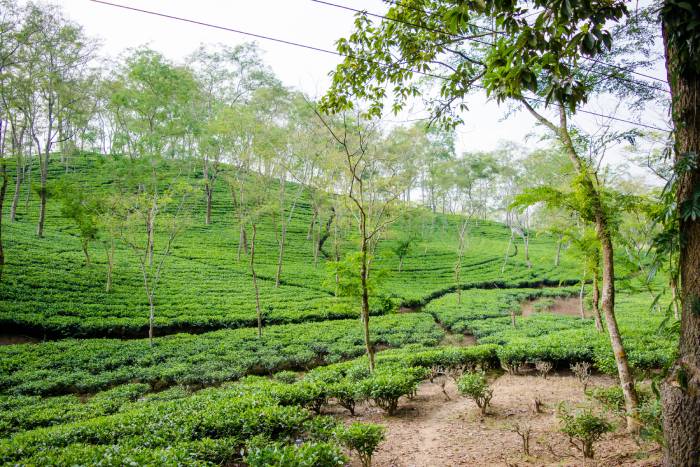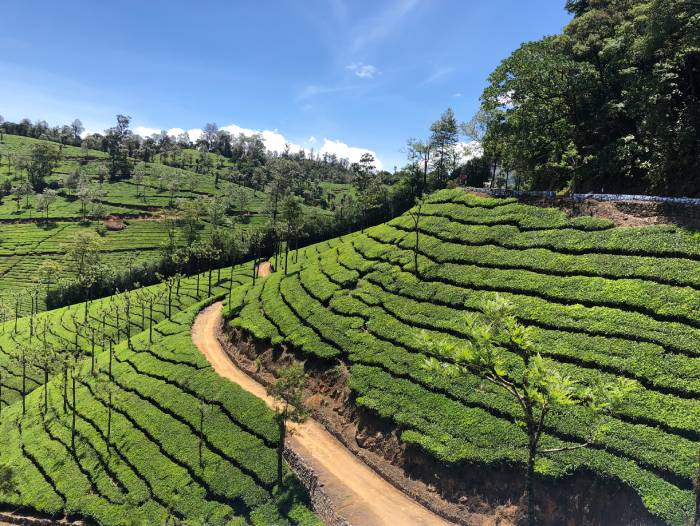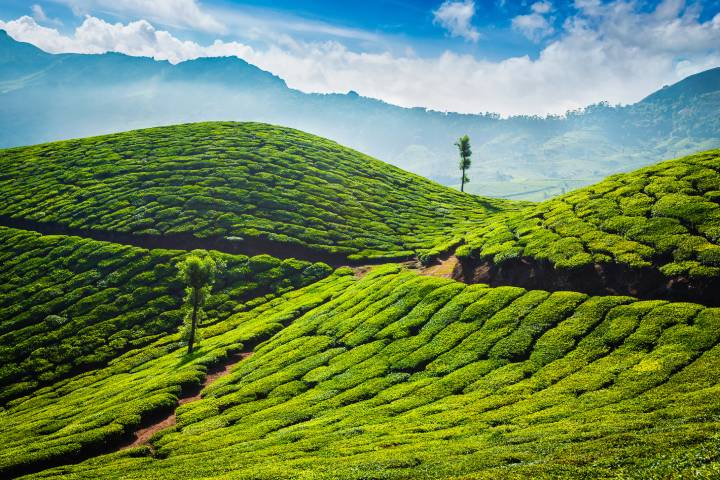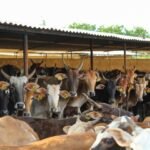The top 10 tea producing states in India showcase the diversity and richness of India’s tea industry.
Renowned for its tea production, India is the second largest tea producer in the world.
Tea plants require special climatic conditions for their growth; India has several such regions that favour the growth of Tea plantations.
Let’s look at the top 10 tea producing states in India, the different tea varieties, their production, characteristics, and their contributions to the tea industry in India.
The total tea production in India, as per the tea board, for the year 2022-2023 is 1374.97 Million Kgs.
Of which, Northern India (including northeast) accounts for 1149.50 M.Kgs of tea, whereas Southern India accounts for 225.47 M.Kgs of tea.
1. Assam

Located in the northeastern India, Assam is the largest tea producing state in India. Assam alone produces 698.38 Million Kgs (M.Kgs) of tea, accounting for 50.8% of tea produced in India.
Favourable climatic conditions, nutrient-rich soil, and ample rainfall made this state an ideal region for Tea cultivation.
The Chachar region and Assam Valley region, which covers the Brahmaputra valley and foothills of the Himalayas, are well-known regions for tea cultivation in Assam.
Most of the Tea produced in Assam is of CTC (crush, tear, curl) type of black tea and is primarily consumed in India. However, a significant amount of production is exported to other countries.
Tea enthusiasts appreciate Assam tea for its rich aroma, strong and malty flavour, which makes it taste great when mixed with milk.
The high humidity levels in these regions contribute to the distinct characteristics of Assam Tea.
Tea industry contributes nearly 5% of Assam’s GSDP and employs thousands of workers.
An interesting fact is that the state government declared tea as the state drink of Assam.
Another fact is the Assam Company, formed in 1839 by the East India Company undertook the first commercial production of tea in India.
2. West Bengal
The State of West Bengal stands second in the list of top 10 tea producing states in India, with a production of 418.84 M.Kgs (30.46%).
The Darjeeling, Terai, and Dooars regions in Bengal produce some of the finest and highest-quality teas.
Regarded as the Champagne of Teas, Darjeeling Tea has great global demand.
The high altitude of these regions, cool climate, and misty weather give the distinctive flavour of Darjeeling tea.
The tea producers hand-pluck and process these Darjeeling tea leaves using the orthodox method to preserve the aroma and flavour.
Meanwhile, tea from the Dooars regions and other parts of Bengal is produced mainly using the CTC method. Most of the Dooars Tea produced is strong black tea.
The state’s Tea Industry contributes significantly to the economy and employs thousands of workers providing employment.
3. Tamil Nadu

With a production of 154.49 M.Kgs, the Southern Indian state of Tamil Nadu stands third among the top 10 tea producing states in India.
The hilly region of Nilagiri in Tamil Nadu is famous for its tea estates. The Cool climate, altitude, and fertile soil in this region made it suitable for tea plantations. At the same time, the climatic conditions brought a distinct flavour and aroma to the Nilgiri Tea.
Other regions in the state, Coimbatore and Dindigul also produce Tea. The tea auctions in Coonoor and Coimbatore attract domestic and international buyers.
Most of the tea produced in this state is black tea
Tamil Nadu’s Tea Industry plays a significant role in the state economy by contributing to the GSDP growth and by providing employment.
There are several tea estates that follow sustainable organic farming, ensuring the productivity of eco-friendly tea.
Many tea gardens promote argo tourism, allowing visitors to explore tea estates, manufacturing units, and more.
The history of tea cultivation in South India dates back to the 19th century, during which the British established tea plantations in hilly regions.
4. Kerala

Another noteworthy tea producing state from southern India is Kerala. This state produced 65.98 M.Kgs of tea during 2022-23.
Kerala produces predominantly Black tea that has a strong, bold, and distinct flavour. Alongside, this state also produces green tea, white tea and speciality tea like oolong tea.
There are also several estates that produce orthodox teas featuring a golden yellow colour and mellow taste.
The hilly regions of the western ghats located in Munnar, Wayanad, and Idukki have unique climatic conditions that favour tea cultivation.
Apart from the production, Kerala is known for tea tourism. Several tea estates allow visitors to stay and offer guided tours, allowing them to witness tea processing and cultivation.
Kerala is famous for exporting high-quality teas of several tea brands to countries worldwide.
5. Arunachal Pradesh
With an average production of 11 to 12 million kgs of tea per year, Arunachal Pradesh stands as one of the Key players in tea producing states in India.
Tea cultivation in this state is concentrated in regions like Dirang and Itanagar.
The hilly terrain, abundant rainfall, and favourable temperatures of Arunachal Pradesh helped to establish several tea gardens in these regions.
Many teas from Arunachal often are of exceptional quality with smooth flavour with hints of floral and fruity notes. Itanagar is famous for its Black Tea, which offers a distinct malty taste.
Moreover, there are several varieties of teas from this state that have a global demand.
6. Tripura
Unlike the other states where British planters had taken the lead in tea cultivation, Tripura’s tea cultivation was started by an Indian enterprise as Tripura was a princely state then.
Tea cultivation started in 1916 in Tripura, and this state now produces 9 million Kgs of tea, which made Tripura stand in the top 10 tea producing states in India.
The hilly regions in North Tripura and Dhalai region, along with favourable climatic conditions, fertile soil, and average annual rainfall, made several regions in this state a suitable ground for the cultivation of tea.
Most tea produced in Tripura is CTC black tea with a small amount of green tea.
Tea ranks as the second largest organized industry in Tripura after rubber.
7. Bihar
The state of Bihar contributes significantly to India’s overall tea output. This state recorded a production of 5 Million Kilograms in 2018-19.
Kishanganj region in Bihar is well known for its tea estates. Nearly all tea produced in Bihar is CTC. However, Bihar, in recent years, has been producing great amounts of green tea.
The climatic conditions and fertile soil in Kishanganj district suits the tea plantation. Currently, tea gardens are grown on 50000 acres of land in this district.
8. Karnataka
Karnataka occupies a prominent position among the top 10 tea producing states in India, with a production of 5 M.Kgs.
Tea cultivation predominantly takes place in the hilly areas of the western ghats, particularly in the districts of Hassan, Chikmagalur, and Kodagu in Karnataka.
Karnataka produces several varieties of tea, such as black tea, green tea, and speciality tea.
Tea cultivation in Karnataka is gradually increasing. Most of the tea produced is consumed domestically. However, some speciality teas are exported to other countries.
9. Nagaland
Northeastern State of Nagaland recorded 1.24 M.Kgs of tea during 2017-18, making it one of the top 10 tea-producing states in India.
Tea produced in this state is of high quality and is mostly CTC-type. Several Hilly regions in the districts of Dimapur and Kohima have favourable conditions for tea cultivation.
Organic and sustainable farming practices followed in the tea gardens of Nagaland brought a great recognition to the tea produced in this State.
Small-scale farmers own most tea gardens in this state.
10. Himachal Pradesh
The Kangra Valley in Himachal Pradesh is the region where the majority of tea cultivation takes place.
This is due to the favourable climatic conditions of the Kangra Valley, with a cool climate, adequate rainfall, and fertile soil for tea production.
The tea produced in Kangra Valley is in great demand due to its distinct soothing taste and delicate aroma.
Himachal Pradesh produces 1 million Kgs of Tea and has implemented several measures to double the size of tea production.
Teas produced in Himachal Pradesh have gained both national and international recognition.









